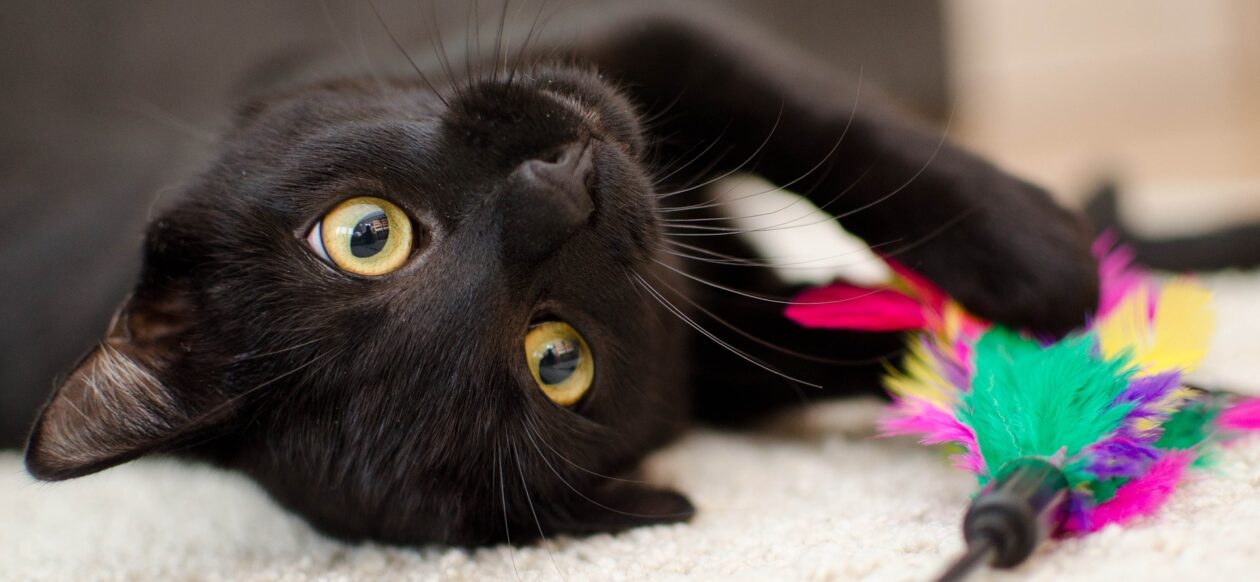Believe it or not, shopping for a safe cat food bowl is an important decision, and one that can make a huge difference to the health of your cat, especially over time. Here I will share my research on the safest cat food bowls to use.
Decisions about bowl size and shape are less important than the material of the bowl. Material really does matter and there are real reasons why to avoid certain materials like plastic, and very good reasons why to choose safe materials like glass and stainless steel.
The safest materials for cat food bowls are glass, stainless steel, and some ceramics. Avoid plastic altogether. And here’s why.
Glass
Personally, I prefer glass. Glass is non-porous and non-toxic (the ingredients in glass are silica, calcium oxide, and sodium carbonate all of which are non-toxic), it doesn’t react with acids or other liquids, it’s dishwasher-safe, can be sterilized, and is very stable. Beware: There is lead in some glass especially from Mexico and some glass made from foreign countries that have lower regulations and manufacturing standards than the U.S. But in general I like and use Corning Ware and Anchor Hocking Oneida, both are made in the USA. All of my cat food bowls are Corning glass and water bowls too.
Stainless Steel
Stainless steel is a good material to use for cat food bowls and water bowls. It is generally safe and is quite impermeable, doesn’t hold germs, doesn’t react with liquids or foods, can be sterilized, and is very strong. It is made from iron, nickel, chromium, and molybdenum, which could leach into foods if the dishware is scratched or in really bad shape, but probably only in very negligible amounts.
There was a case where PETCO recalled their stainless steel bowls in August 2012 because they contained radioactive material, you can read about it here.
Ceramic
Ceramic can be OK, but watch out for glazed products and lead glazed paint. Glazed products should be labeled “lead-free,” if you don’t see it on the packaging, then avoid it. Pottery from Mexico or from other foreign countries using bright yellows, oranges, and reds in glazed ceramics could contain lead and cadmium, which are both very toxic. Also, look for “food safe” with ceramic as there are some ceramic dishes that are not food-safe at all and could contain lead and other toxic chemicals. Use ceramic dishes and bowls with caution.
Plastic
Avoid plastic altogether. Plastic bowls may be cheap but they come with a big price—for your cat. These can be the most dangerous bowls used to feed your cat and avoid using them for water too, see my previous post. Plastic scratches and harbors germs and bacteria, and cleaning the bowls can still leave them contaminated with bacteria.
Worse is plastic contains and emits Bisphenal A or BPA, and plastic bowls are not required to disclose this so many products do have BPA, it’s up to the manufacturer. BPA is a synthetic hormone that is proven to be an endocrine disrupter and can cause chromosomal and reproductive system disorders and cancer; BPA impairs brain and neurological function; causes diabetes and obesity; and causes cardiovascular system damage. It’s a long list to be avoided and it doesn’t end there.

Plastics also have Phthalates in them, these are the “plasticizers” making PVC more flexible and resilient. Phthalates are known to cause cancer in humans and are listed as one of the 10 most toxic chemicals causing harm to the human body.
Plastics can also contain lead. Yes. Some plastic bowls may contain levels of lead, this is indicated by research organizations testing plastic products for food use and finding lead. So even though some plastic pet bowls may be BPA-free (likely you won’t know for sure) and certified as FDA food safe, they may have lead or Phthalates in them. So best to avoid them all together, then you’re sure to be safe, especially since our regulations don’t require any disclosure, and manufacturers are not wanting to disclose the truth either.
Finally, plastic can cause Feline Acne, a skin allergy to plastic, which is relatively benign compared to the serious and much more dangerous effects listed above.
Finally, Keep Them Clean
Be sure to wash your cat bowls well after each use with soap and water and dry them well to kill germs. Put your wet food bowls in the dishwasher at least 3-4 times per week to sterilize them or even daily. Cats do not like to eat or drink from dirty bowls and dishes and they’re very sensitive to smell, which will come from dishes not well washed and cleaned.




how often should dry food bowls be washed? Hubby and I have an ongoing ‘argument’ about this.
Thanks!
I wash mine in warm soapy water daily, since my cats share the dry food bowls. Then I put them in the dishwasher once a week for sterile cleaning, but you could probably do this more often to get them really clean. Wetfood cat bowls I put in the dishwasher twice a week, and wash them in warm or hot soapy water after each use. Good luck!
This was SUPER useful to me! I am making a product and this was so cool! Thank you for the advice! Good Luck!